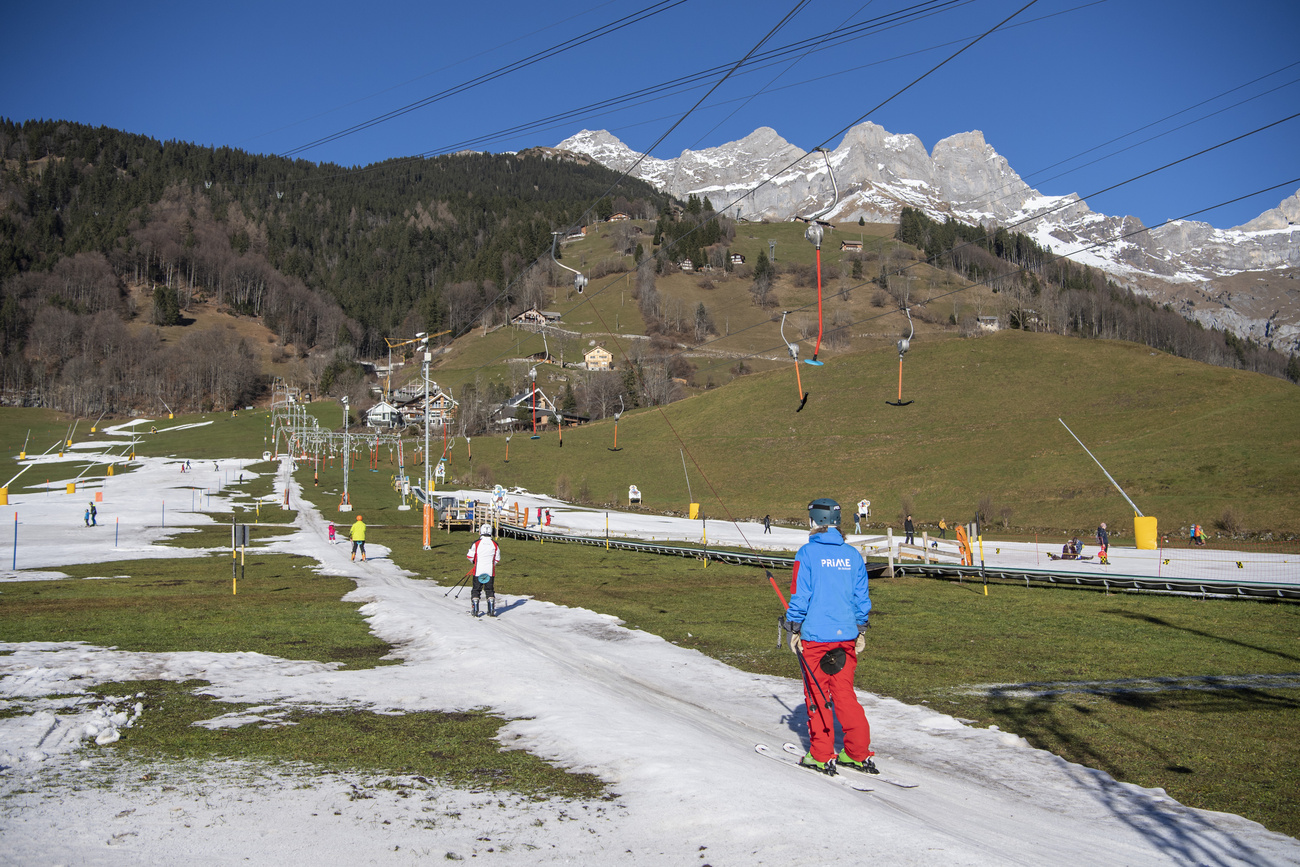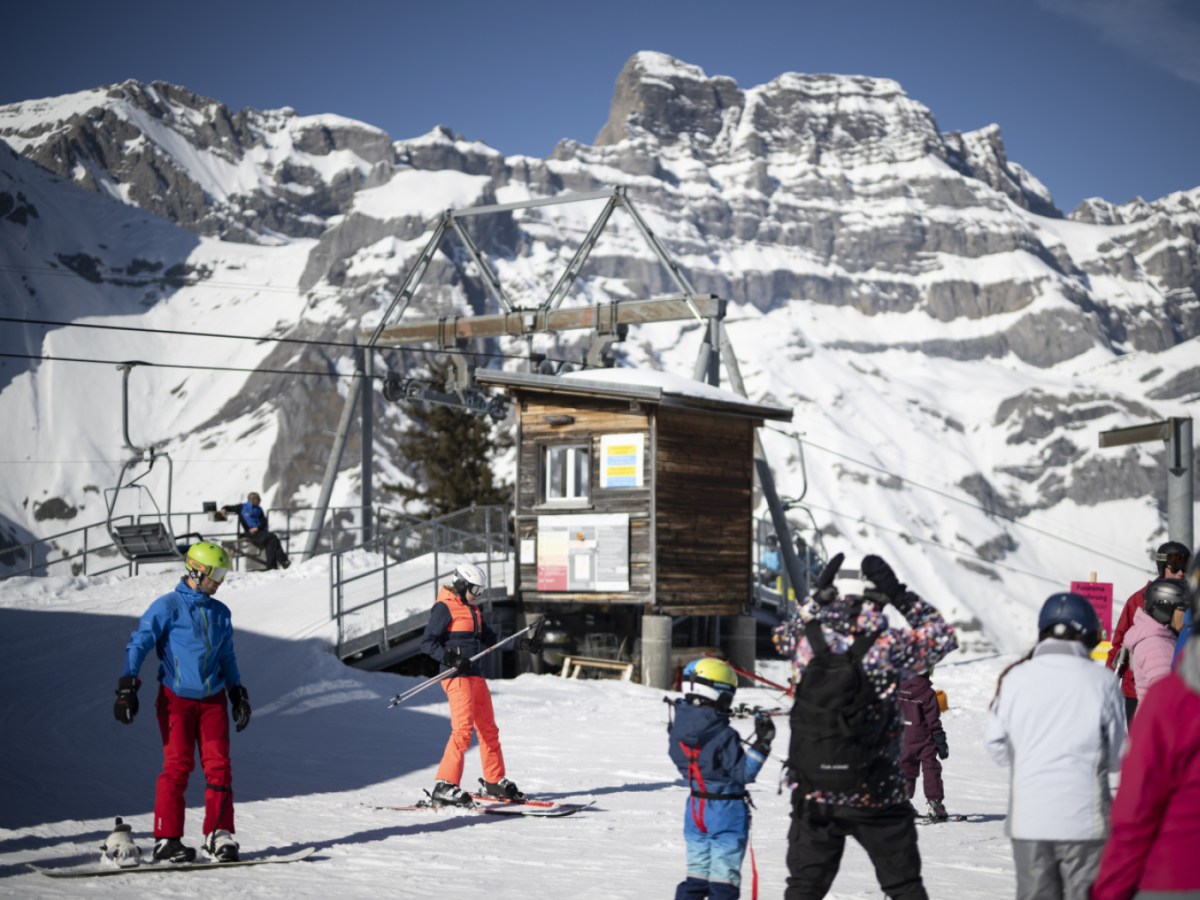
“Winter tourism is not disappearing, it is changing,” Berno Stoffel, director of the Swiss Cable Car Association, told reporters on Monday.
Keystone-SDA
Swiss tourism officials have unveiled “Snow Compass” models that aim to help mountain resorts assess the impact of climate change and adapt by 2050.
+Get the most important news from Switzerland in your inbox
The tools and data are intended to help winter sports resorts, mountain railways, hotels and other stakeholders better plan their future in the face of warmer temperatures.
The models, introduced a month ago as part of the “Snow Compass” project, have been received “very positively” by the destinations, Berno Stoffel, director of the Swiss Cable Car Association, told the AWP news agency on Monday.
Major construction projects are underway in many parts of the Swiss Alps. “For these service providers, the models we provide are also a confirmation and help them to obtain the necessary authorisations more easily and based on data,” he said.
Less snow and more uncertainty
“Winter tourism is not disappearing, it is changing,” Stoffel told reporters on Monday. Ski resorts, especially those at lower altitudes, will have to cope with less snowy winters and greater uncertainty.
Depending on the situation, the higher temperatures can already become a problem for destinations at an altitude of 1.500 metres above sea level – and the trend is rising.
More

More
Climate adaptation
Switzerland braces for more heatwaves, droughts and violent storms
This content was published on
Nov 4, 2025
Switzerland is heading for a future that is hotter, drier and more unpredictable, with less snow and heavier rainfall, according to a new climate report.
Read more: Switzerland braces for more heatwaves, droughts and violent storms
To document the problem of snow reliability on a factual basis and to support tourism providers in making investment decisions, the Institute for Snow and Avalanche Research (SLF), with data from the Federal Office of Meteorology and Climatology (MeteoSwiss) and the support of the federal institute of technology ETH Zurich, developed models that attempt to show the developments in snow reliability and snowmaking possibilities in 23 mountain regions in Switzerland.
Translated from German by DeepL/sb
How we work
We select the most relevant news for an international audience and use automatic translation tools to translate them into English. A journalist then reviews the translation for clarity and accuracy before publication.
Providing you with automatically translated news gives us the time to write more in-depth articles. The news stories we select have been written and carefully fact-checked by an external editorial team from news agencies such as Bloomberg or Keystone.
If you have any questions about how we work, write to us at english@swissinfo.ch
Articles in this story
